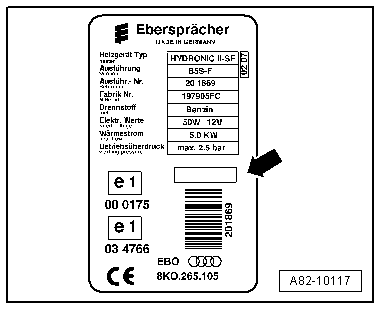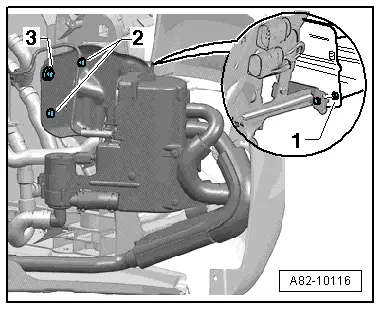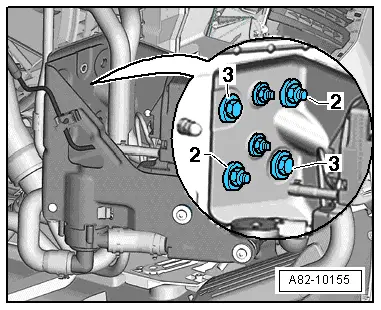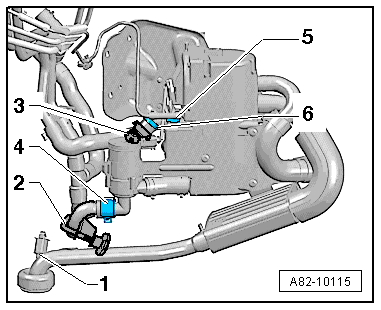| t
| If the auxiliary heater has been replaced, the year of initial commissioning for the newly installed heater is to be entered on the heater rating plate -arrow- and on the new “duplicate rating plate” (the illustration shows a rating plate for an auxiliary heater in a vehicle with petrol engine). |
| t
| There are different versions of the factory name plate. |
| –
| Check the position of the air intake and the intake air noise insulation of the auxiliary heater (air inlet and exhaust outlet must not be obstructed). |

Note 
Note | t
| If the value displayed in the “Pipe filling” adaption channel was other than “0”, perform the “Basic setting” function, “Pipe filling” display group (the metering pump -V54- is actuated for the time set in the “Pipe filling” adaption channel, the adaption in the adaption channel is reset to “0” and the fault “Pipe filling” is erased). |
| –
| After replacing auxiliary heater components, switch on the auxiliary heater and allow it to run for some time (at least 10 minutes) in full load mode before handing over the vehicle to the customer. There may still be remnants of factory lubricant for example in the components and these would evaporate following initial activation as soon as the components become hot. |
|
|

|
 Note
Note Note
Note

 Note
Note
 Note
Note Note
Note
 Note
Note Note
Note

 Note
Note
 Note
Note Note
Note